-

-
GETTING THERE
Fly from Singapore to Tokyo or Osaka Kansai, then take the train to Nara or Kyoto. From Nara, take a 50-minute bus ride from the JR Nara Station, or from the bus stop at Kintetsu Nara, to Yagyu village. Alternatively, if coming from Kyoto, it is a 10-minute taxi ride from Kyoto's JR Kasagi Station to the Yagyu bus stop. Both the longer and shorter hikes start at the Yagyu bus stop. For basic English information about Yagyu village, go to www.yagyu.com/index-en.htm.
Yagyu Kaido: A walk through history in Japan's Kansai
The 17km Yagyu Kaido, one of Kansai's best hikes, takes travellers through a beautiful landscape and on roads that historical figures traversed
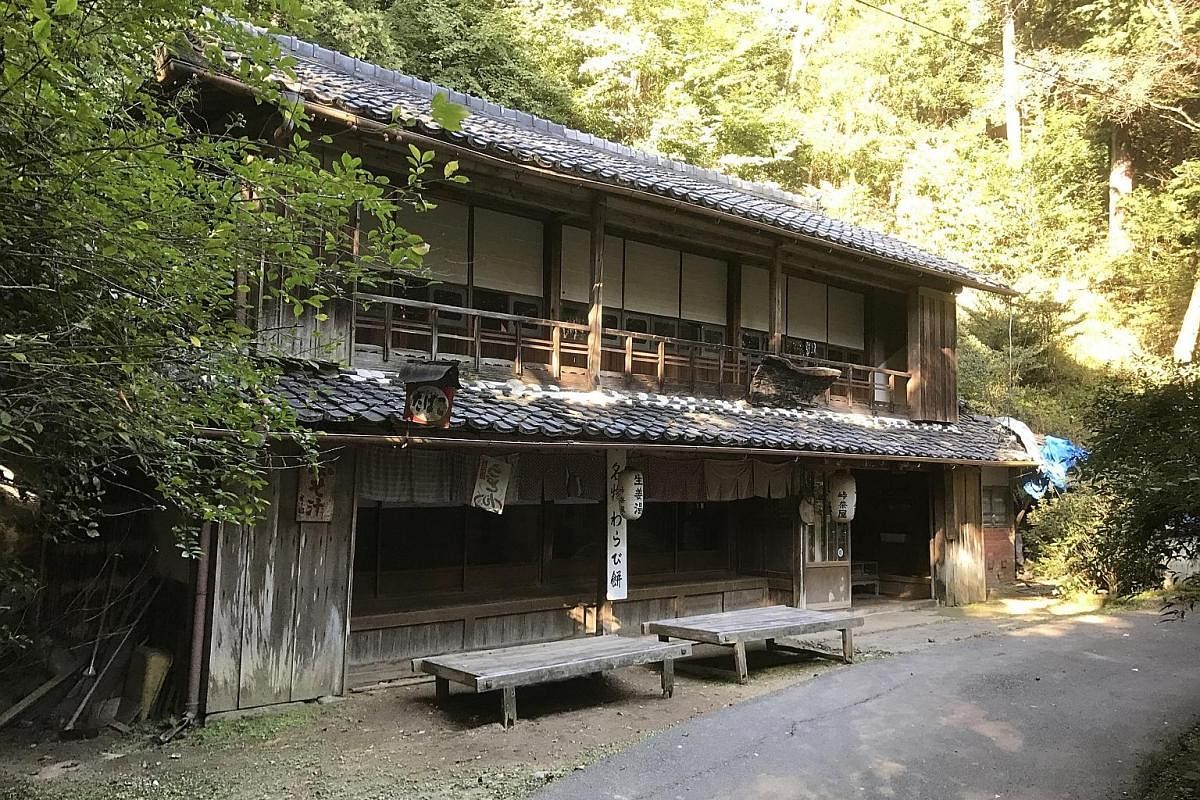
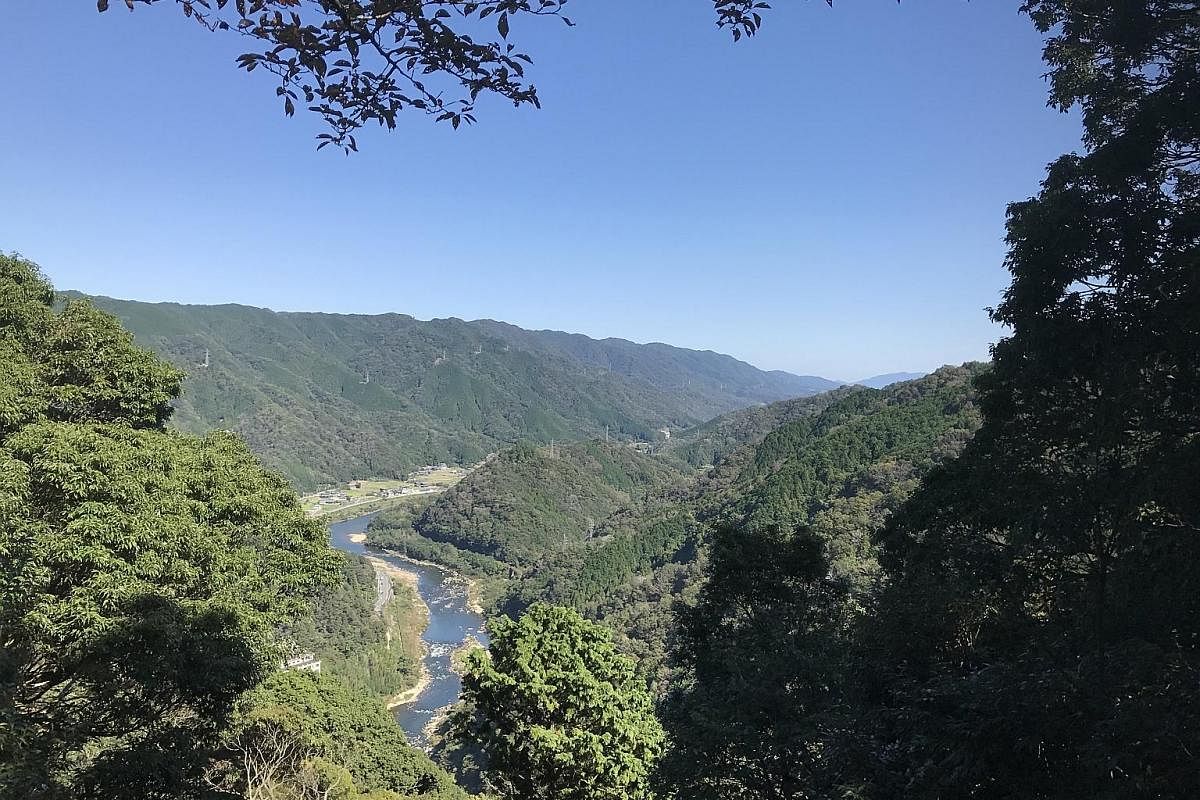
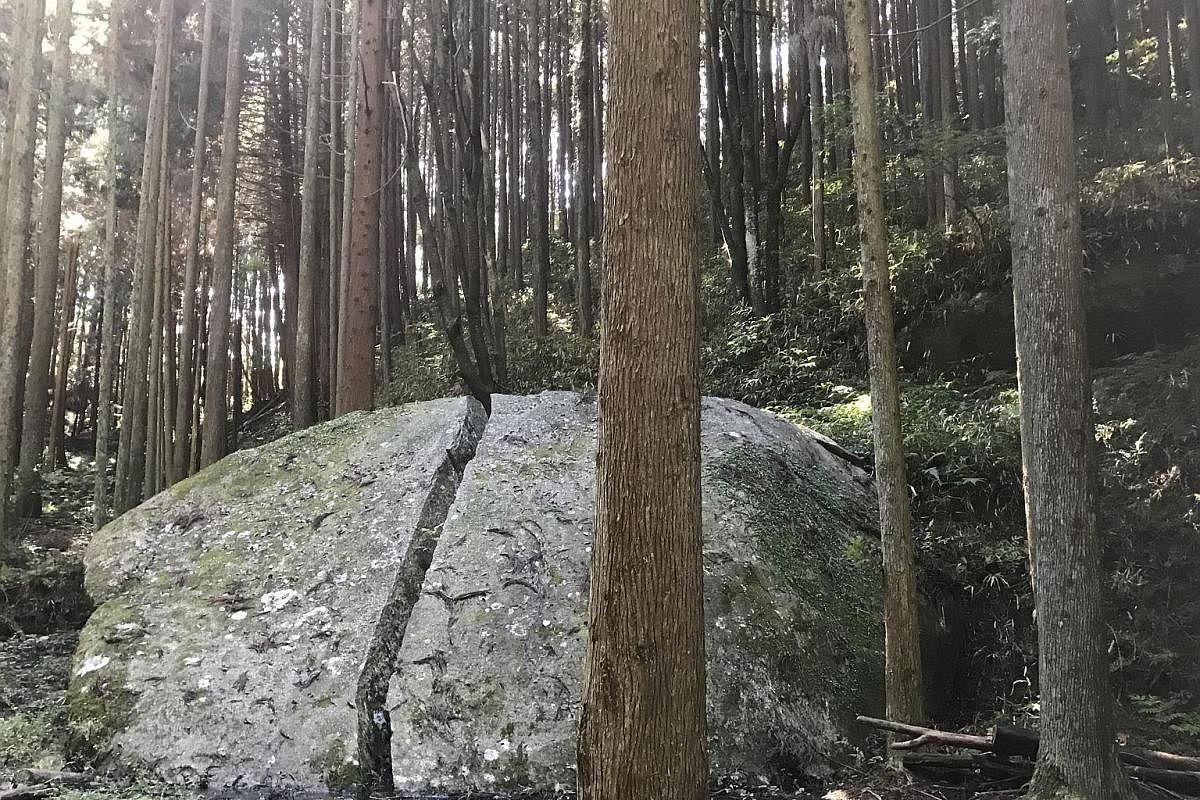
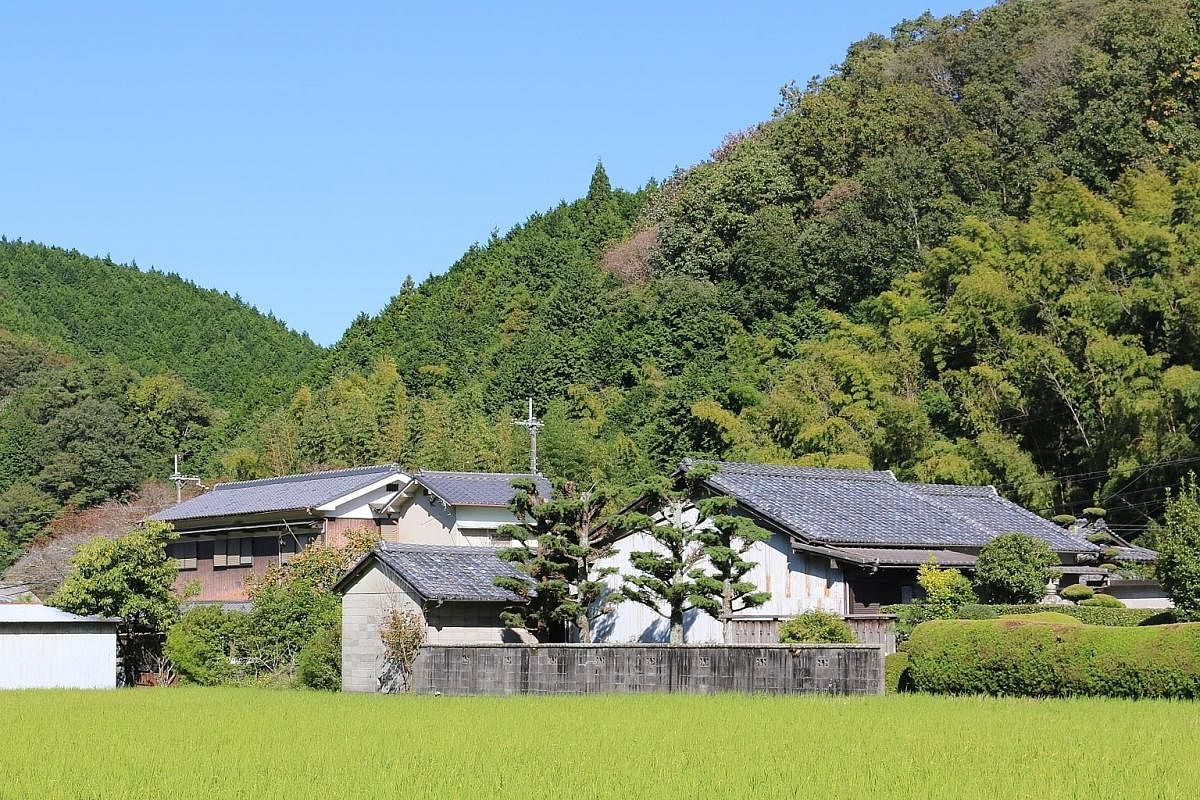
On a warm Kyoto day in 1594, Tokugawa Ieyasu found himself lying on his back, his wooden sword just out of reach. The general's retainers were in shock and began to move to subdue his opponent.
Ieyasu, aged 51, founder of the Tokugawa dynasty of shoguns, called them off, impressed at the skill of the older man who had knocked him down, despite their 14-year age difference. Yagyu Munetoshi, who was 65 and a general himself, had retired from the neverending warfare of 16th-century Japan to perfect his swordsmanship and eventually create his own system, the Shinkage Ryu.
Now nearly 20 years later, Ieyasu asked Munetoshi to be his teacher but he refused due to age, recommending instead his son, Munenori. This cemented a pact of allegiance between the Yagyu and the Tokugawa families.
It was a relationship that was especially advantageous to Ieyasu, who used Munetoshi's mercenary and ninja contacts to create a system of espionage that eventually led him to unify Japan and be named Shogun in 1603.
Few countries are as pleasant to walk through as Japan, where every footfall is rich with history. Besides the beautiful landscape, the people whom travellers come across, both past and present, remind a person of his place in the passage of time.
And while the ninja may no longer reside in the hills surrounding the quiet Nara hamlet of Yagyu, the roads they traversed still remain.
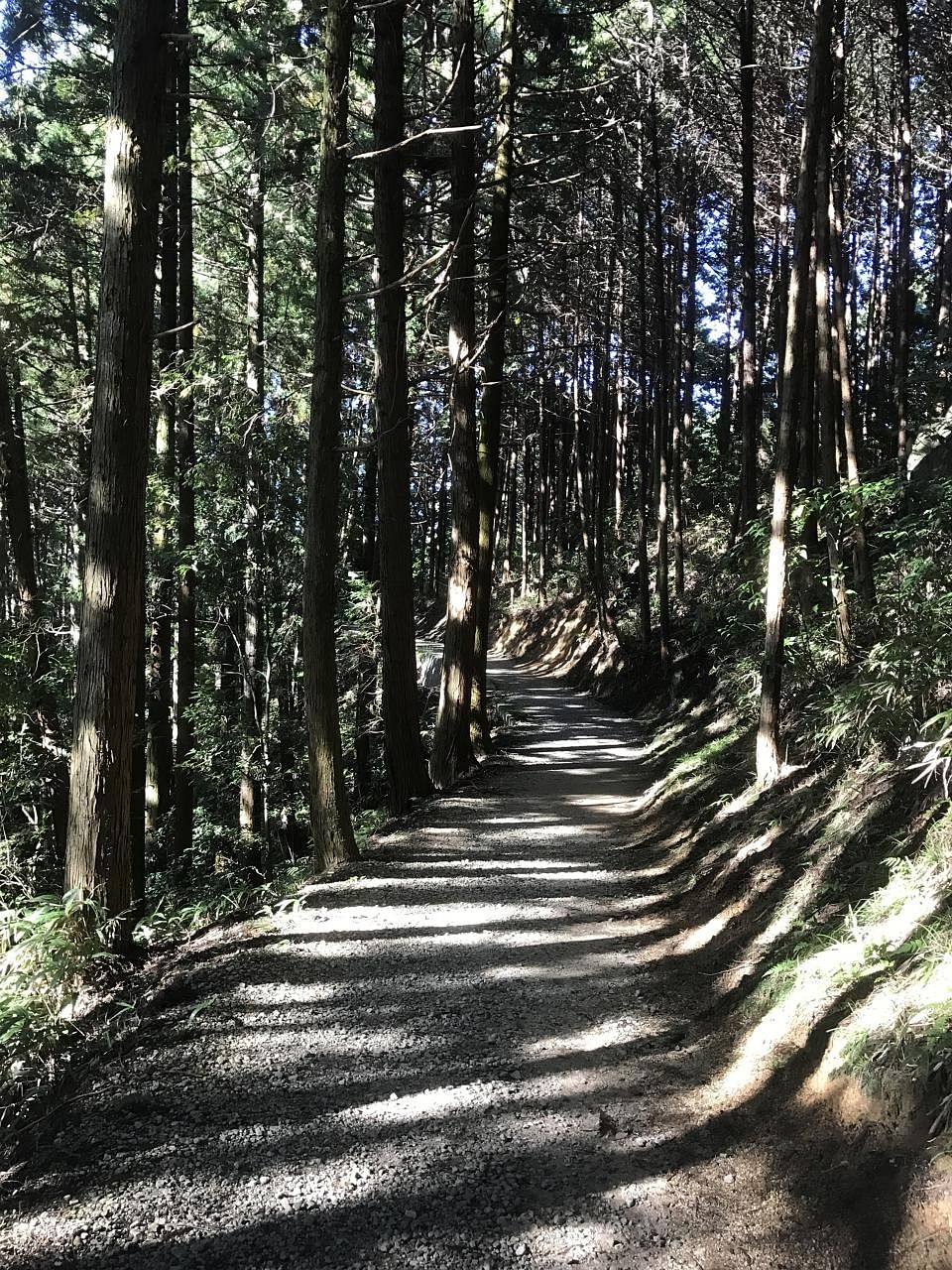
Stretching 17km to Nara's deer park, the Yagyu Kaido is one of Kansai's best hikes and takes about 41/2 hours to complete.
Aside from an initial short, but steep, ascent out of the village of Yagyu itself, the trail is relatively flat, making this an enjoyable hike for people of average fitness levels.
The trail is now part of the Tokai Shizen Hodo. Trail markers appear frequently and are quite easy to follow, starting conveniently from the bus stop at Yagyu village.
Yagyu is popular with history buffs, including young women who, inspired by a popular manga comic, like to dress up as famous warlords from the 16th century. I see no one around, however. There are maybe one or two folks out in their fields but the place is completely silent. Even the dogs are lying quietly in the sun.
After treading my way through the village, I enter the forest near a large stone Jizo, the first of many that I will pass throughout the day. Jizo is one of Japan's most beloved folk figures, whose duty is to look after travellers and the spirits of lost children.
The trail climbs from here at his feet, leading 10 minutes later to the pass. From here, it is mostly downhill all the way to Nara.
Dozens of large rice fields stretch far down along the range of hills, their banks making the perfect pitch for me to take a quick rest after the climb and to watch the clouds follow their shadows across the bare earth. It would be easy to doze here, but I have four more hours of walking ahead of me.
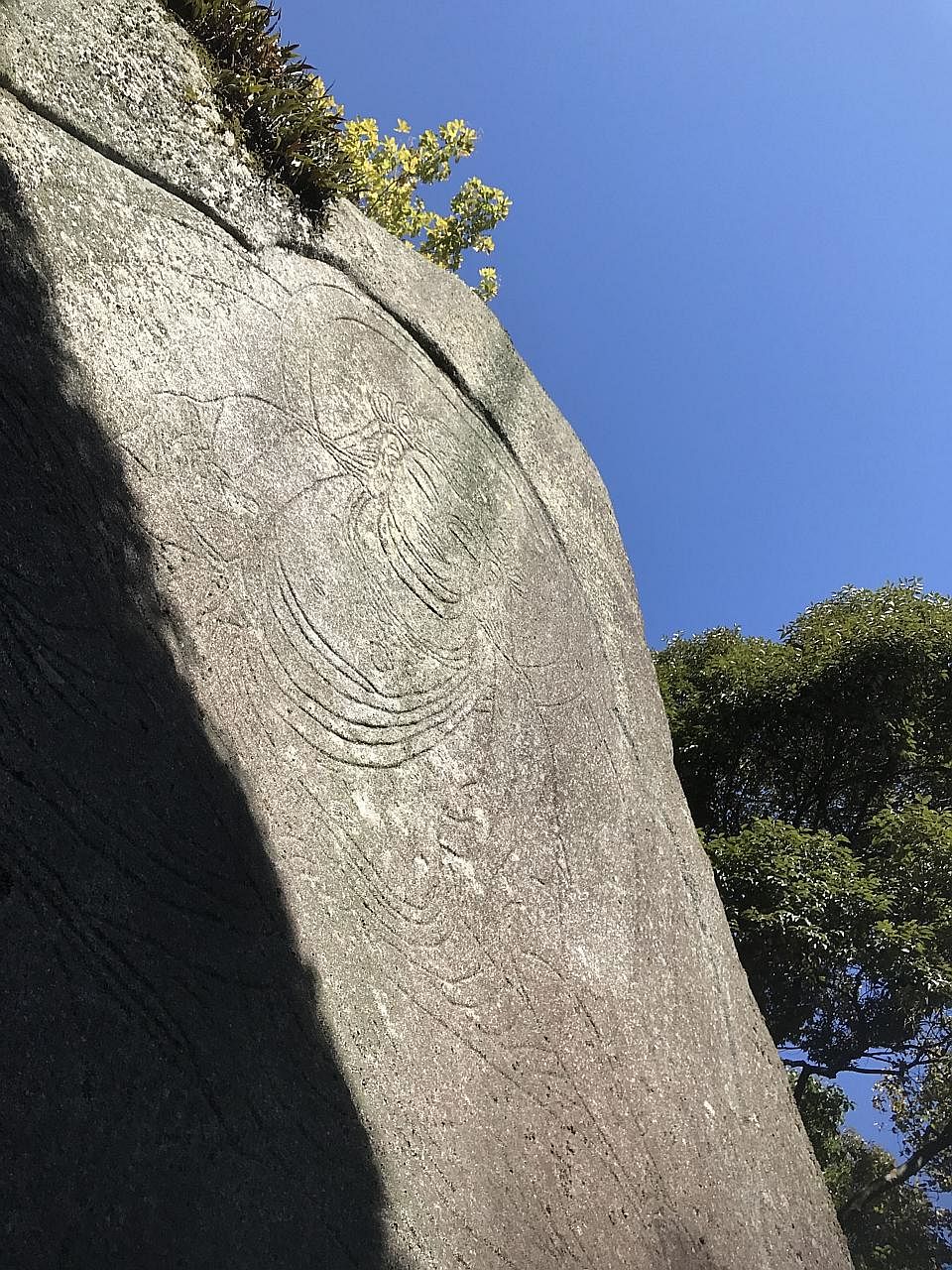
I move into the village now, where shiitake mushrooms and other vegetables are left to dry in the sun, alongside some wild boar skins. This is the home of an apparently successful hunter, who enjoys talking with hikers, though his chatty nature threatens to prevent me from reaching Nara before sundown.
Beyond the village, flags advertising udon begin to line the trail and, before long, I come across a small noodle shop, looking somewhat incongruous beside the rice paddies. Hikers must make up the bulk of its business.
Just beyond the next village is a small burial mound and farther down is a large shrine sitting amid the trees. I have been passing stone-carved Buddhist figures all day but this shrine is far older than their 1,200 years.
Beyond this, a group of old folks are playing a game of gateball, essentially croquet and very popular with pensioners. After wrapping around the court's far end, I continue straight down towards a small stream, the clack of mallet on ball following me deep into the forest. (This is the only place where the trail is not marked well.)
Above one small bend in the stream are a handful of gravestones, dark and weathered but still retaining the Sanskrit sutra carved into the soft stone. In the stream itself, the rocks are equally high, equally mysterious and ancient. The work of water has cleaved the tallest among them into three.
From there, the trail climbs again, up towards Ninnuku Pass.
This is the midway point of the trail and seems a good place to take a break. (The tired hiker can take a bus from here back to either the Nara Kintetsu or JR train stations.)
I sit a while at a small noodle shop that offers views of a pond and the Enjoji temple beyond.
Built in the year 756, this temple now belongs to the faith-based Pure Land Jodo sect of Buddhism, historically popular with farm communities. Besides some fine statues, there are also two small shrines on the grounds, both national treasures. It costs 400 yen (S$5) to enter.
From here, the trail takes on a completely different character. It is now also referred to as the Takisaka-no-Michi.
Whereas the previous couple of hours have been spent passing through farm villages, the remaining 21/2 hours will take me through the forest, walking along a trail now paved with stone. Only a handful of such trails remain in Japan. I follow a ridge for a half hour before dropping between a series of tea plantations.
From the highest point of the tea fields, a trio of stone Jizo look out over the handful of homes here, as if playing hide and seek. Many of these houses have cheap fruit and vegetables for sale on the honour system. (It is recommended to leave some space in your bag for "groceries".)
Just beyond, I come to the Toge Chaya tea house, which dates from the Edo period (1600-1868). On the walls hang the swords and rifles of hard-up samurai who left their weapons behind to square their bill. Tables have been set up outside beneath the high cedars, allowing hikers to get recharged with hot tea and warabi mochi.
From here, it's a quick descent into Nara. The trail begins to follow a stream, lined with huge and ancient trees. Stone Buddhas begin to appear with more regularity, some beside the trail and others higher up on the mountainsides.
I have a bit of fun trying to spot them all. Most impressive is the tall Kubikiri Jizo. Legend has it that a disciple of the Yagyu school, Mataemon Araki, tried out a new blade on this deity. The decapitated head has been replaced, yet the tell-tale cut across the neck remains.
Eventually, the forest falls away to suburbia. There is a bus stop further down the hill at the main street but Icontinue to walk the last 20 minutes from here to Nara Deer Park. The deer that I pass out here seem a little more skittish than their domesticated cousins farther down. There are also a few temples between here and the park, including Shin Yakushi-ji with its impressive line-up of Buddhist statues.
I bow my head in thanks for a pleasant afternoon.
• Edward J. Taylor is a freelance writer who divides his time between Kyoto and Singapore.
Roads bearing evidence of past warfare
For those who prefer a shorter 3km hike, there is the option of following the Tokai Shizen Hodo trail in the opposite direction to Kasagi village. This takes less than two hours and allows for ample time to explore Yagyu village proper.
The starting point for both this shorter hike and the longer one (see main story) is the same bus stop in Yagyu. Above the bus stop is a hill upon which rests Hotokuji, the Yagyu family temple. Built in 1638, the temple houses a small museum of displays pertaining to the clan, including handwritten scrolls containing the teachings and many of the secret principles of the Shinkage Ryu school of swordsmanship.
In addition to the woodcarved figures of father-and-son swordsmen Munetoshi and Munenori Yagyu is a statue of Takuan Zenji, family adviser and author of the classic Zen treatise, The Unfettered Mind. He is also accredited with the invention of the yellow daikon pickle that bears his name.
Behind the temple stand the stone graves of multiple generations who carried the school of swordsmanship into the current century.
A short walk through the forest takes one past tea-covered hillsides to a small shrine. Here lies Yagyu's star attraction, Itto-seki, a mysterious stone.
Apparently, one storm-tossed night, the swordsman Munetoshi got himself into a fight with a Tengu, a mountain goblin. Bringing his sword down in what he assumed to be a fatal strike, he cleaved through the rock instead, his opponent having leapt aside at the last moment. The size of the stone is truly impressive. Whether or not the story is true, there is a timeless quality here.
Back in the village again, there is a family manor standing large and conspicuous on a hill across from Hotokuji temple. Inside are more items related to the family history, including old wooden swords and kenjutsu gear, the ancestors of today's kendo equipment.
In one room is a series of photos of the village, comparing shots of certain locations taken both recently and over a century ago.
Just below the manor, it is easy to pick up the Tokai Shizen Hodo trail again, which will lead you to Kasagi mountain in under an hour. This walk is truly one of Kansai's hidden gems. Beyond the main temple hall, a path takes you in a circle around the top of the mountain.
Cut into the towering rock faces are various Buddhas two- and three-storeys high. The amount of work it must have taken to produced them boggles the mind.
The views of the Kizu River Valley below will make you linger.
The descent to Kasagi village is down a long flight of steps. Once below, Wakasagi Onsen tempts as a place to soak weary feet. There is a JR rail station here, with trains heading for Nara and Osaka. Kyoto connections are a little less frequent.
Yagyu is a special place that deserves a couple of days. From a village born in the days of seemingly endless warfare, travellers can walk backwards in time, along roads bearing the stone-carved evidence of man's attempt to surpass those divisions that lead to war, of seeking a happiness beyond measure.
Some of this bliss is sure to rub off as one moves one's feet along the well-trod cobblestones.
Join ST's Telegram channel and get the latest breaking news delivered to you.
A version of this article appeared in the print edition of The Sunday Times on May 14, 2017, with the headline Yagyu Kaido: A walk through history in Japan's Kansai. Subscribe
